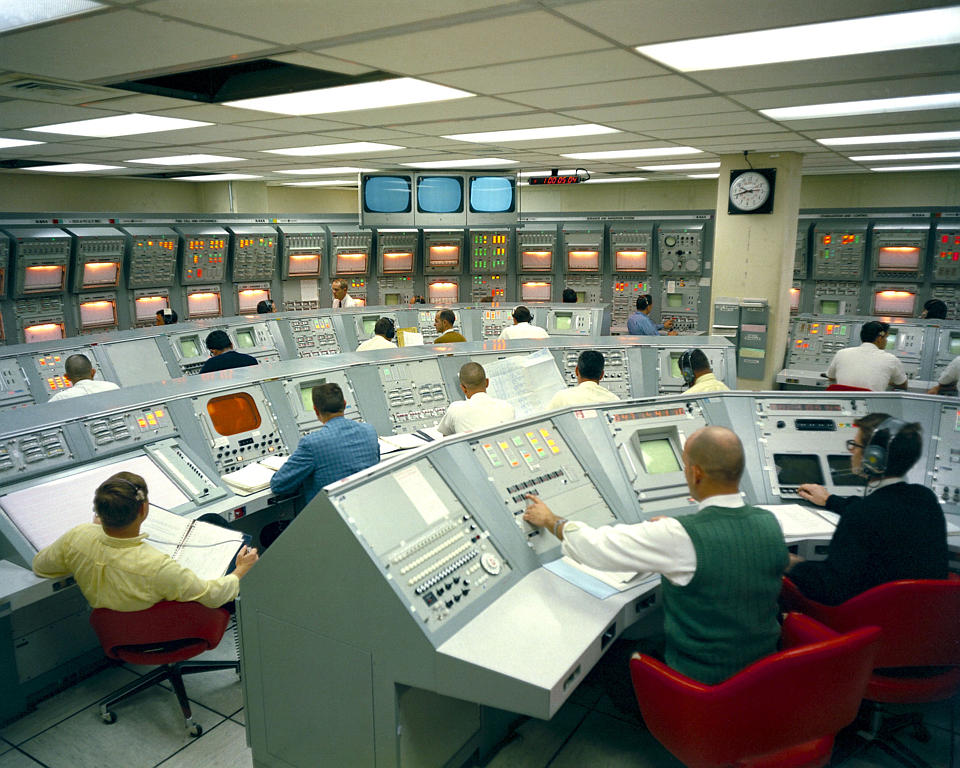
By Frank Snow
When I was the Ground System Project Manager for the Advanced Composition Explorer (ACE), Chuck Athas, who had extensive experience with large NASA and DoD systems, was officially my scheduler and planner, but he was also my can-do person.
A priceless asset to any project is the can-do person. This is the person who can cut through bureaucratic red tape, get a reluctant party to cooperate or obtain the needed widget. As schedules become tight, this person’s value only increases, since they seem to thrive on pressure.
In the beginning of the ACE project, Chuck, the subsystem managers and I put together an extensive plan/schedule for the ACE ground system. The plan, supported by a large commercial package, provided a detailed three-year schedule to deliver a mission operations center at Goddard Space Flight Center, a data analysis center at Caltech University, a spacecraft integration and test system, support of the payload processing at Kennedy Space Center, acquisition of the data through the Deep Space Network and the ground transport of the data to the NASA Centers and nine instrumenters located throughout the world. I thought maintaining this plan would be a full-time job for Chuck, but Chuck just mumbled something about DoD projects, billions of dollars, and asked for additional work. This was the first, and last time, I ever questioned Chuck’s ability to complete an assignment.
Chuck would do anything I asked—and then some things I didn’t dare to ask. All I had to do was put it out there that we had a problem. For example, when people were not meeting a particular deadline, I could send out emails and phone messages and they would conveniently not be around to respond. I could say to Chuck, “Go and find out what’s happening,” and he would be on it right away.
If someone was slacking off or had issues they didn’t want to fess up to, Chuck could turn things around just by virtue of his personality. I saw him work this way and it was magical. He never resorted to being confrontational, but boy could he lay a guilt trip on you: “You have to get it done. What do you mean? You’re committed to this. The whole program is going to collapse.”
It was impossible to argue with Chuck. He would say, “Let me help you. I’ll do anything.” When someone would say, “I don’t have the time,” Chuck would come back with, “I’ll do it; what do you need done?” “Well, I have to get my daughter out of daycare.” Chuck’s answer was, “I’ll get your daughter out of daycare.” Whatever needed to be done, he’d do it for you. Anything.
I used Chuck to keep in contact with a Goddard engineer named Chris. Chris was one-of-a-kind, an absolute genius, and usually spread out over 15 to 20 projects. Chris was helping us to modernize our ground data transport, a critical element in the ground system. The implementation of this system was a constraint to launch. If Chris couldn’t solve this problem, then I would be forced to request a launch delay from the ACE Project Manager, Don Margolies.
I would send Chris e-mails, leave him phone messages, try contacting his supervisors—nothing. I can’t say that he was definitely trying to avoid me, but he was probably trying to avoid me. Other project managers were more effective acquiring Chris’s support. I needed to reprioritize his “To Do” list so that ACE was at the top. I knew that if you could physically get hold of Chris he would do your work; so it was Chuck’s job to go over there, get hold of Chris and bring him back to me. I used to say to Chuck, “Find Chris because I absolutely need him,” and Chuck would go to Chris’s building and search the hallways or sit outside the office door until Chris showed up. I don’t know how Chuck convinced Chris to come see me, but he always did.
Chuck was also like the master sergeant in the army (he reminded me of the old TV sitcom, Sergeant Bilko) who had the inside knowledge of how to get supplies. Somehow things showed up and nobody understood how they appeared. They certainly weren’t coming through procurement. He was trading, I suspect. I know he used up a lot of the little things that we get for projects like decals and posters. One time we needed six or seven headsets for communications on mission simulations. As the simulations approached, they still had not been delivered. I called Chuck and told him the problem, and he got it resolved. To tell you the truth, I didn’t know how he got them. And to be honest, I didn’t want to know.
Anything that needed to be done—and he didn’t care what it was, he would attack with the same gusto and unflappable drive to succeed. Chuck epitomized the concept of team spirit. He would perform any task that supported the success of the project and quickly became the project expert in anything I gave him. Quite often the “little” things in a multimillion-dollar system of hardware and software can bring the system to a grinding halt. I used Chuck to ensure that “little” things never strangled the ACE ground system.
“Don’t ask, don’t tell.” That was the best way I found to deal with Chuck. Was there anything he couldn’t make happen? Probably something. But with Chuck on the team I felt like I could ask for Cleveland and the next day he would show up with the deed.
Lesson
- A project manager must trust his team. As the overall team leader you must allow team members to take the lead on issues in which they clearly have the expertise to get the job done.
Question
How do you know when a team member should be at liberty to challenge the status quo without asking for your approval?
Seeing the light
Frank Snow employed the unorthodox skills of Chuck Athas on the Advanced Composition Explorer (ACE) project. ACE launched on August 25, 1997, and has been an outstanding success for NASA. Scientific instruments on board the observatory are studying the Sun, providing researchers back home on Earth with breakthrough knowledge about sun spots, solar wind, and the composition of matter in the interstellar medium. Visit the ACE project page at http://www.srl.caltech.edu/ace to learn more about the project.










